Women in American art at Crystal Bridges Museum
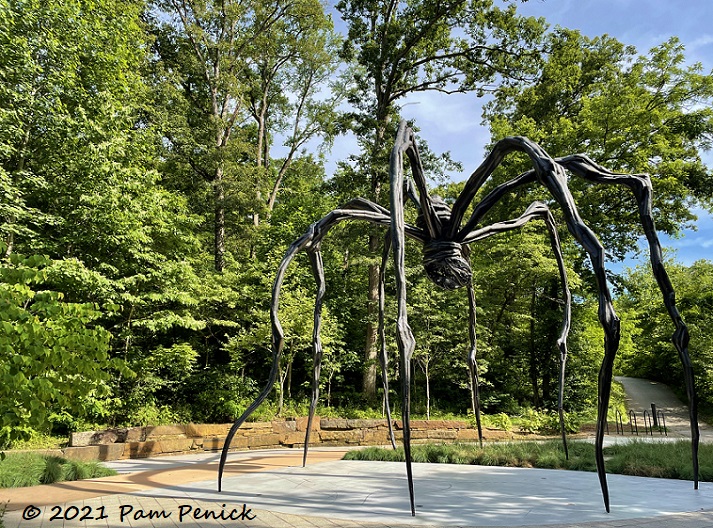
Roadtripping up to St. Louis last month with my mom, we stopped in Bentonville, Arkansas, to visit the marvelous Crystal Bridges Museum of American Art. It was my second visit and Mom’s first. When visiting Crystal Bridges with your mom, you must be sure to see Maman (Mother) by Louise Bourgeois.
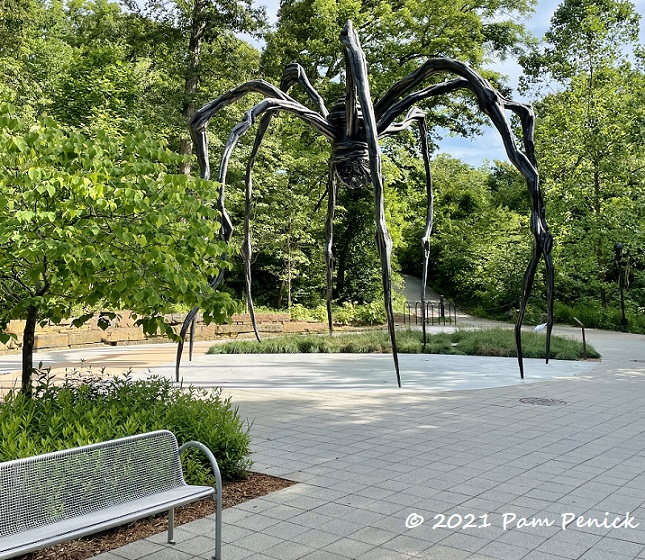
Bourgeois represented her mother, whom she loved, as a gigantic spider — a weaver and repairer. When I last visited, this monumental sculpture towered dramatically over the courtyard entrance. But the museum has since been remodeled, and Maman now tiptoes along one of the woodland trails.
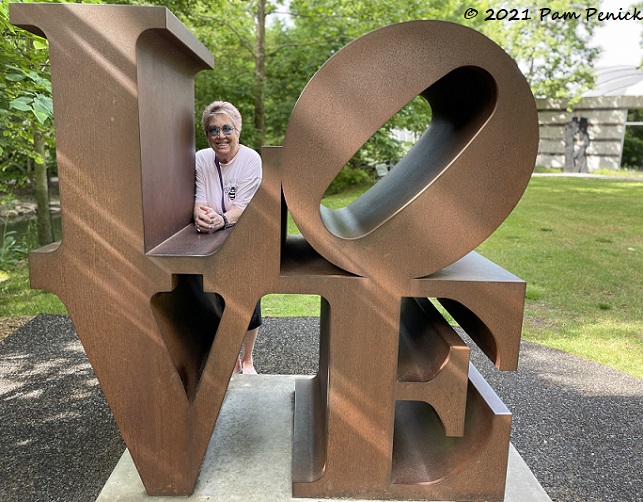
I photographed my own maman posing with this steel LOVE sculpture by Robert Indiana.
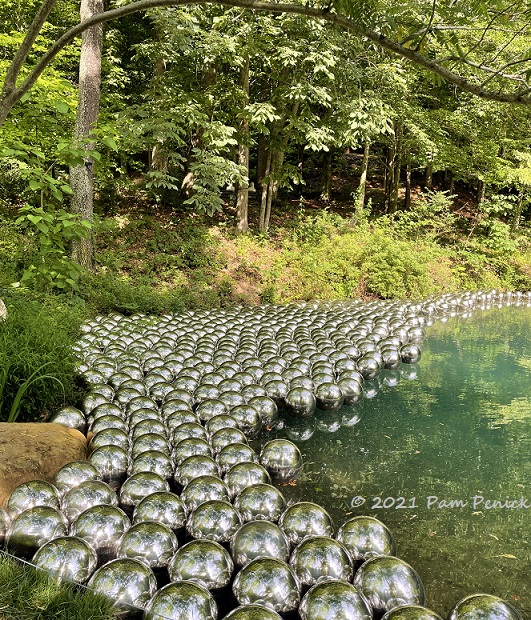
Along the same trail we found Narcissus Garden by Yayoi Kusama, a 92-year-old Japanese artist. Approximately 900 mirrored balls float in a pond, offering up the reflections of those who look into them.
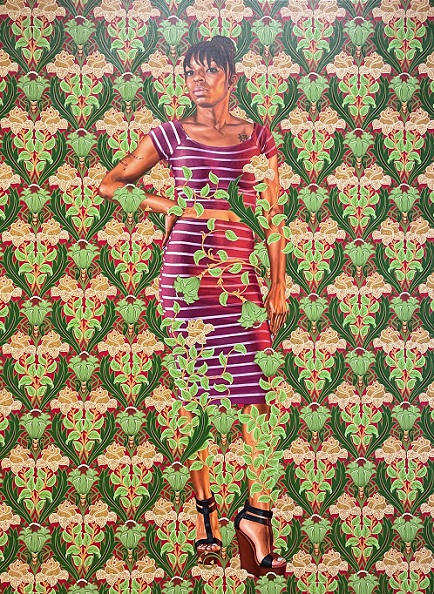
In the galleries, I found myself fascinated by portraits of American women from different eras, especially this one: Portrait of a Florentine Nobleman (2018) by Kehinde Wiley. Her confident pose, her outfit, the way she is entwined in the flora that makes up the patterned background — it’s all very arresting. What about the odd, archaic title? It riffs on this 16th-century painting. Here’s the museum’s description:
“Portrait of a Florentine Nobleman, based on Francesco Salviati’s sixteenth-century painting, features Shontay Haynes of St. Louis, Missouri. Apart from her pose (borrowed from the source painting) all of the decisions about presentation—from the subject’s outfit to her tattoos—reinforce a sense of agency and self-creation. As the painted floral patterns weave over the top of this confident heroine, Wiley affirms Haynes’s belonging within an often exclusive art historical tradition.
For this group of works commissioned by the Saint Louis Art Museum (which owns the Salviati work), Wiley selected subjects from Ferguson and St. Louis. With the 2014 death of Michael Brown in nearby Ferguson, St. Louis became the center of a national conversation around race and police violence. Wiley therefore positioned his series as ‘a kind of moment around celebrating Brown’s life…a strange kind of elegy.’”
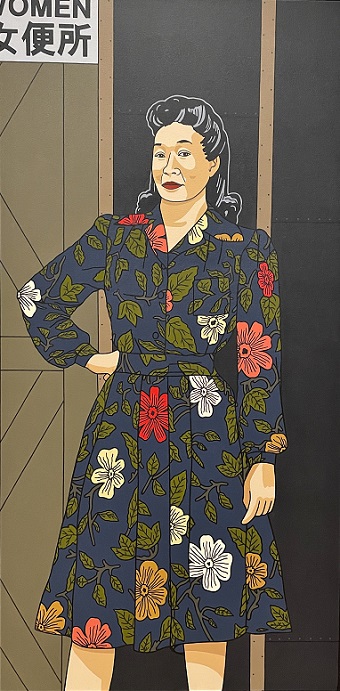
The woman in Block Dance Break #1 (2006) by Roger Shimomura strikes a similar pose to Wiley’s subject. Born in Seattle, Shimomura and his parents (also U.S. born) were forced into a Japanese internment camp in the 1940s. From that experience he made this painting of a woman at the camp, dressed for a dance — a semblance of normalcy — waiting outside the women’s toilets.
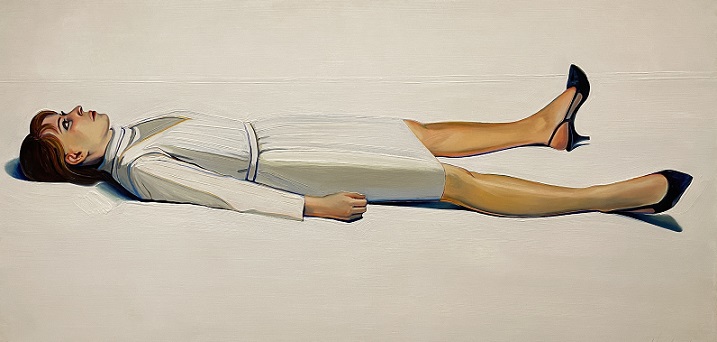
Supine Woman (1963) by Wayne Thiebaud made me smile. Who hasn’t had a day where you felt like this?
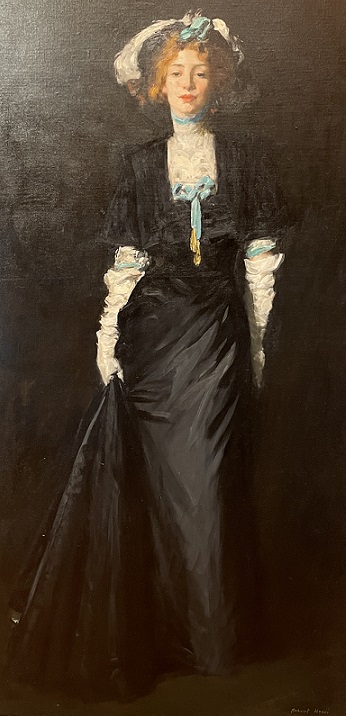
Jessica Penn in Black with White Plumes (1908) by Robert Henri features a woman gazing as confidently at the viewer as Kehinde Wiley’s subject. As the museum describes it:
[Henri’s] portrait summons the…seventeenth century Spanish tradition of full-length figures painted against dark backgrounds. Henri challenged the past with a modern subject, portraying a young woman who had come to New York in pursuit of professional opportunity. Penn, a dancer, made her debut on Broadway in 1901. Her bold gaze and confident pose communicate her independence and spirit.
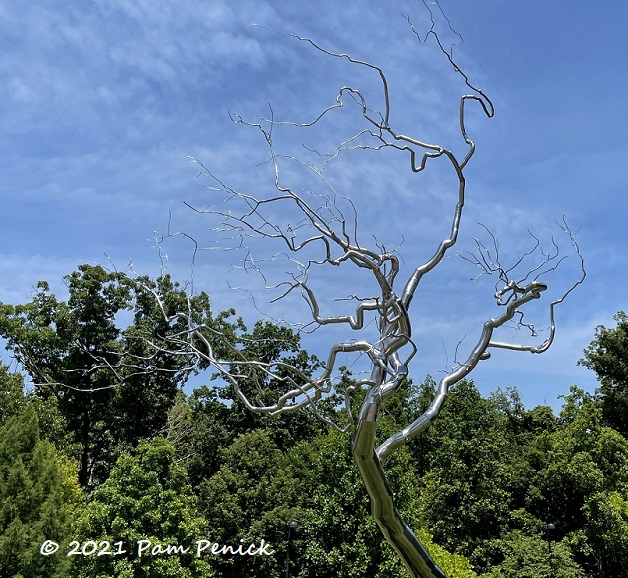
We saw many other striking works of art that afternoon, including Yield, a stainless steel tree with bare branches like a fork of lightning.
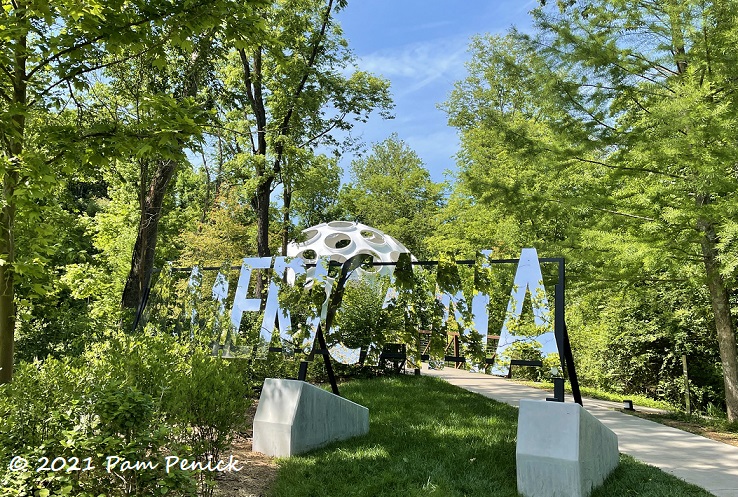
But on this Fourth of July holiday, I’ll leave you with Americana, a mirrored stainless steel sculpture by George Sánchez-Calderón that reflects the beauty of the American landscape all around it, and that invites us to reflect on what America means to us. Happy Independence Day, my fellow Americans! Here’s to filling our lives with more art and a welcome diversity of artistic vision.
Up next: Part 1 of my tour of P. Allen Smith’s Moss Mountain Farm near Little Rock, Arkansas. For a look back at the Missouri Botanical Garden in a 5-part series, click here to start with the last post and work your way backward.
Email subscription update
Subscribe to Digging and get updates delivered directly to your inbox. It’s easy! Just click over to follow.it (my subscription service), enter your email, and click Follow. An email confirmation will be sent, and click on that to confirm. You’re done! A head’s up: if you’re a longtime subscriber, I’ve had to switch services, and my updates now come from follow.it. You may find they’re going into your spam folder (ugh, sorry!). If so, add follow.it to your trusted contacts to keep receiving Digging. Thank you for reading!
__________________________
Digging Deeper
Come learn about gardening and design at Garden Spark! I organize in-person talks by inspiring designers, landscape architects, authors, and gardeners a few times a year in Austin. These are limited-attendance events that sell out quickly, so join the Garden Spark email list to be notified in advance; simply click this link and ask to be added. Season 8 kicks off in fall 2024. Stay tuned for more info!
All material © 2025 by Pam Penick for Digging. Unauthorized reproduction prohibited.


Interesting and arresting as all the art works are, the stainless steel tree had the greatest appeal for me. Natural but not. Happy 4th Pam!
I love that tree too. It would have special appeal for any gardener, I think.
Having followed your blog for several years now, I almost feel like I know you, a bit.
Posts like this one make me think you must be a lovely person.
Aw, that’s very kind of you to say, Paula. Thank you!
Wow, that is some very interesting art. Love Bourgeois. She also did some great textile art.
I didn’t know that, Linda. I wonder if they have any of her textile work at the museum.